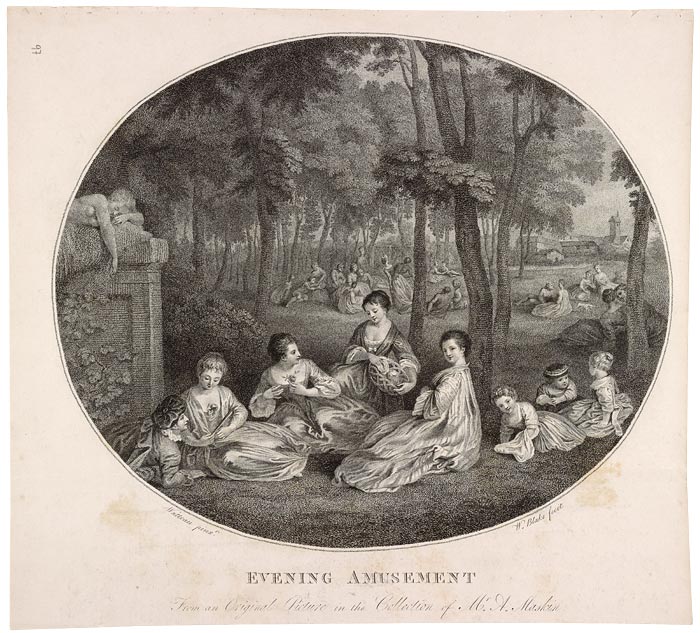
Probably modified copies of Le Rendez-vous de Chasse and Les Champs Elysées, these prints were published when Blake was twenty-four years old. They were the first plates created after Blake completed his apprenticeship and demonstrate his great skill as a reproductive engraver. Nevertheless they did not win him commissions for the large print projects of the early nineteenth century. Only seven copies of Morning and six of Evening have been traced.
I. Engravings
William Blake was tutored by his mother, given drawing lessons at the age of ten, and at fifteen apprenticed to James Basire, one of the most prominent engravers of the day. Seven years later, when the apprenticeship was complete, Blake was admitted to study at the Royal Academy. Because of this solid instruction, he was admired for his craftsmanship and often identified as "Mr. Blake, the engraver." Throughout his life, he maintained that engraving was a true art form: "Painting is Drawing on Canvas & Engraving is drawing on Copper & Nothing Else." Blake's prints demonstrate his strong commitment to line, developed through Basire and enhanced by his own creativity. Fortunately his engraver's training would support him, though not well, for the remainder of his life. At forty-six, he wrote, "I curse & bless Engraving alternately because it takes so much time & is so untractable, tho capable of such beauty & perfection."
